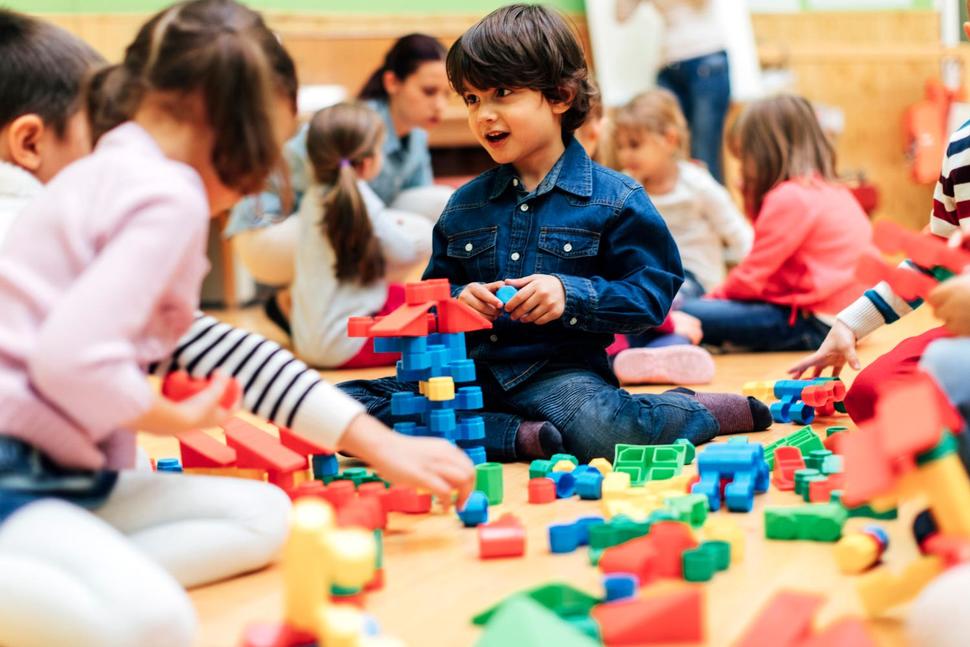I admit that I sometimes (often) sit down to my computer to get work done while at the same time leaving the TV playing in the background. It was in this context that I recently overheard a discussion on one of the national morning news shows about how numbers can define women – most notably numbers that pertain to one’s age and weight. Without paying too much additional attention to the ensuing conversation, the idea nevertheless spurred me to write a blog on the subject. In part, that’s because I think it’s a fairly sad statement on our society when someone’s weight and waistline does more to define them than their skills and accomplishments. But that’s a topic for another day.
For now, I thought I’d take this interesting concept and take a closer (and hopefully more uplifting and lighthearted) look at how various numbers have a way of defining several stage of childhood.
Newborns by the numbers. Even the instant newborns make their appearance in the outside world, many run the risk of being defined by the number of hours of labor they subjected their mothers to. That said, newborns also start out being largely defined by their birth weight – which is more often than not included in announcing a baby’s arrival. I feel compelled to note that the accompanying but often-neglected length and head circumference measurements may seem of less immediate interest to proud parents, but they’re actually of equal importance.
And then, of course, there’s the number of diapers, the numbers of hours of sleep (or lack thereof), and the numbers of daily feedings that make up the bulk of a new baby’s day. These numbers are unarguably important, but I like to remind new parents that it’s good to make sure that these numbers don’t count for more than they’re worth. After all, getting to know and love your newborn goes well beyond a singular focus on numbers.
First year figures. What often wins out in the most noticeable numbers category for infants is simply the number of times you’re likely to call and/or visit your doctor, if for no other reason than the first colds, first fevers, and first (and many subsequent) shots that typically take place during this first fun-filled year. That said, don’t let these numbers scare you. Having numerous questions is to be expected, it’s a great time to take advantage of the frequent contact to establish a healthy relationship with your pediatrician, and the five to seven well-visits (along with their associated vaccinations) and any necessary sick-visits will all serve as an integral part of insuring your child’s health and well-being , not to mention your confidence as a parent.
Toddlerhood by numbers. Toddlerhood is all about numbers. Numbers of words, number of steps, numbers of teeth, and making the celebrated association between one’s age and one’s finger count as evidenced by the skill of holding up two finger to proudly answer the commonly asked question, “How many years (or fingers) are you?” Of course this age may also unfortunately give rise to keeping count of how many times one bites ones friends before learning to curb this normal but socially unacceptable impulse. While it can be painful to live through for everyone involved, toddlers usually overcome this impulse within a matter of weeks to months.
Keeping Count for Preschoolers. Number one and number two come immediately to mind, as three is the typical age at which children master the life skill of putting their pee (number one) and poop (number two) in the potty. While using the potty is a frequent focus of the age, this is also a time when children start to figure out (please note that as the owner of a child care center as well as a pediatrician, I said start, not necessarily master) social skills involved with interacting with, playing with, and negotiating with an increasing number of friends.
Kindergarten counts. At this age, the number of new crayons in the box (with the more the better) and the number of wheels on ones bike (the fewer the better) endearingly add up to quite a lot in the world view of a kindergartener (and more than a few early elementary age children as well!).
I could keep counting, but for the sake of space and time I won’t, except to fast forward to the age at which children start middle school. I can tell you from recent parental personal experience that an impressive amount of effort (and sometimes anxiety) is directed towards remembering the numbers associated with ones newly assigned locker combination, as well as the added challenge of finding ones way to a larger number of classes in a larger number of classrooms.
There are obviously plenty more numbers that relate to each of the ages and stages of early childhood. I’m just glad that for the most part, they all generally add up to fun, meaningful, and important aspects of an healthy childhood.
Originally posted on Omaha World Herald’s Live Well Nebraska


